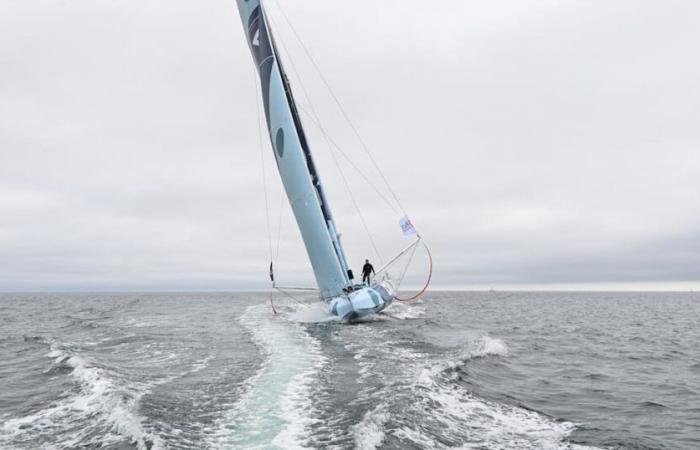A journey that crosses continents through the Atlantic, Indian and Pacific Oceans
Participants will face unstable weather conditions during their crossing, from France to Chile via South Africa and Australia.
The first difficulties off the coast of Europe and Africa
As usual, the adventure will begin in Les Sables-d’Olonne in Vendée. The skippers will descend the Atlantic, passing off the coast of Africa, to reach and go around the Cape of Good Hope, located at the southern tip of the continent, in South Africa.
In this part they will face their first difficulties: first the Bay of Biscay along Spain, very rough at this time of year and where waves can reach nearly 8 meters. Then the Azores anticyclone near the Portuguese islands, which the skippers will try to circumvent to avoid finding themselves trapped in its center.
Next comes the “Doldrums”, the part located around the equator. Between the trade winds of the Northern and Southern hemispheres, this area is very unstable and weather conditions are unpredictable. Visibility may be significantly reduced.
Finally, the Saint Helena high is the last difficulty before the Cape of Good Hope. This is the southern equivalent of the Azores anticyclone, where participants will try to avoid low pressure centers to avoid being confronted with the strongest winds.
Heading towards Australia and Chile, avoiding the Antarctic Exclusion Zone
Then begins the longest and most complicated section of the route to South America. Participants must circumnavigate Antarctica, a long, almost straight line swept by very violent winds and whose latitudes are farthest from the equator.
Please note, they will be prohibited from sailing in the Antarctic Exclusion Zone (AEZ), which encircles Antarctica from the Crozet Islands to Cape Horn, to avoid a possible collision with icebergs.
From the Cape of Good Hope they will cross the Indian Ocean then pass near Perth in Australia, bypassing Cape Leeuwin, located at the southwest end of the country. Then in the Pacific, they will reach Cape Horn, the southernmost point of Chile and South America.
Skippers will find warmer seas there and will be able to begin their journey back into the Atlantic.
A return to Vendée with strong winds
Participants will face strong winds along Brazil, before crossing the equator again and the unstable “Doldrums”, then the Azores high pressure. Finally, they will have to negotiate the depressions of the Bay of Biscay one last time to reach the finish line in Les Sables-d’Olonne.






